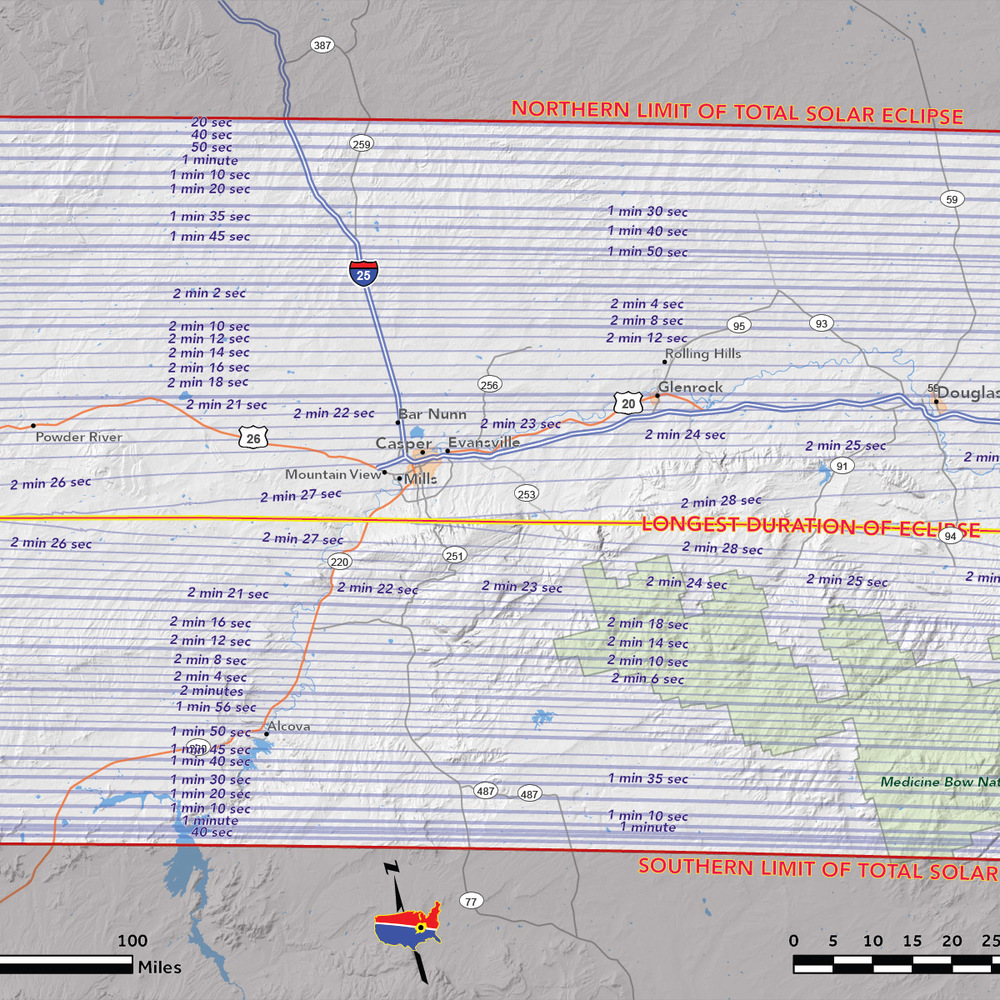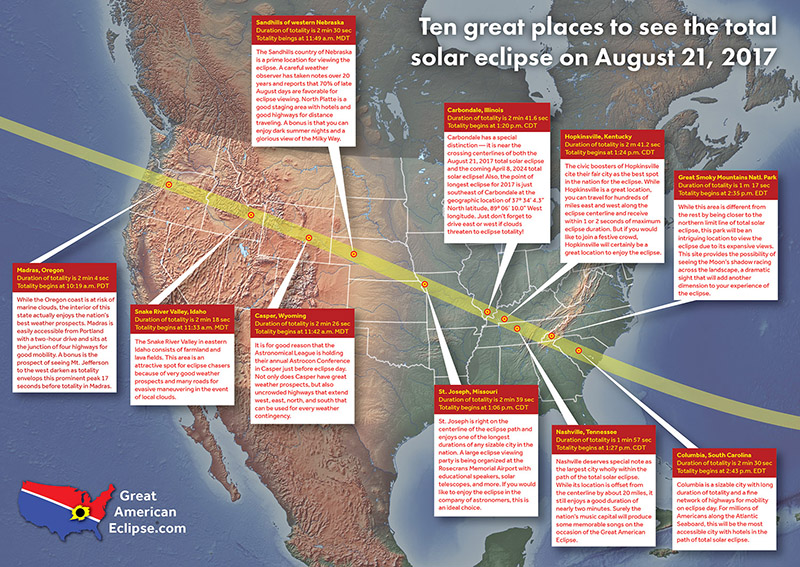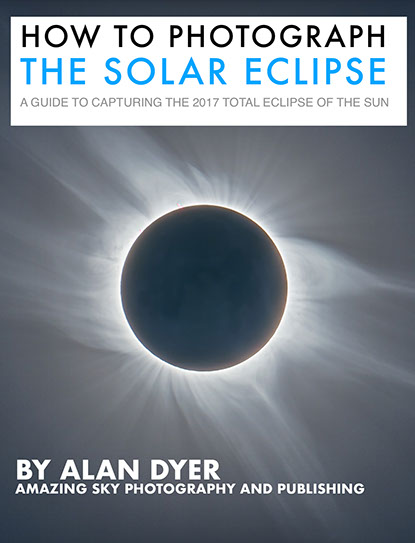 This is your comprehensive guide to the best information on the Great American Eclipse, August 21, 2017. This is the best total eclipse of the sun in the United States in 38 years. The path of totality will cross the entire country from Oregon to South Carolina. This handy guide will help you find a prime location to view and photograph the eclipse. Planning ahead is key.
This is your comprehensive guide to the best information on the Great American Eclipse, August 21, 2017. This is the best total eclipse of the sun in the United States in 38 years. The path of totality will cross the entire country from Oregon to South Carolina. This handy guide will help you find a prime location to view and photograph the eclipse. Planning ahead is key.
Originally posted Jun 26, 2017. Revised and updated August 16, 2017.
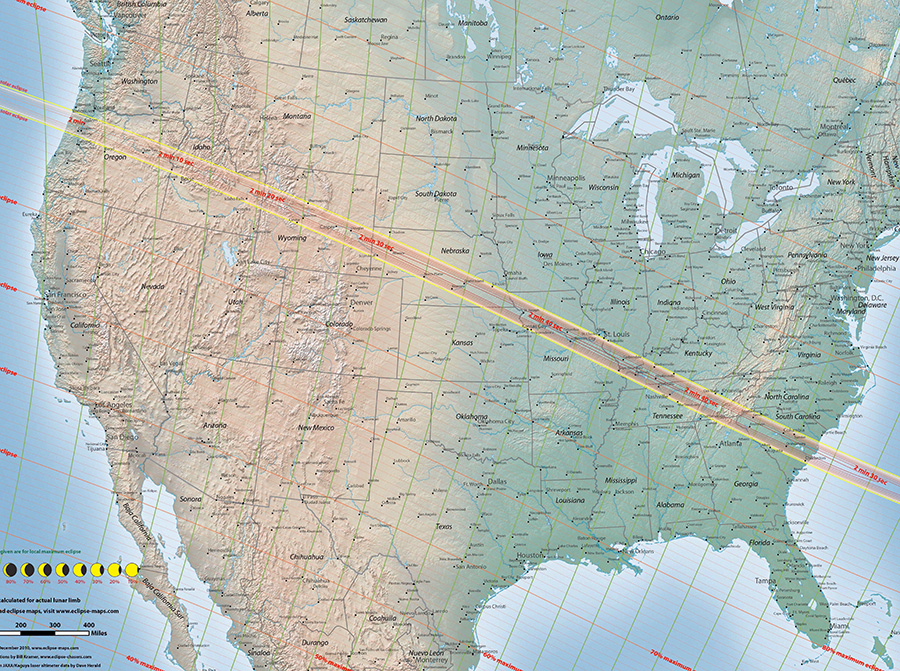
Great American Eclipse, August 21, 2017, Path of Totality. Click for a larger version. A downloadable high res version of this map is at Eclipse-Maps.com
Finding the Path of Totality
To see a total eclipse you must be in the path of totality, a narrow band about 60 miles wide that crosses the United States. If you are north or south of the path you will only see a partial eclipse.
For a quick look at the path of totality in a series of four maps including major cities, go to my solar eclipse maps article. Save these maps to your smart phone or laptop just in case you need top pick an alternate site far from your preferred location. A link at the end of that article will bring you back to this page.
The closer you are to the center of the path of totality, the longer the total eclipse will last, from about 2 to 2 1/2 minutes at the center of the path to only 20 seconds at the edge of the path. Totality lasts longer the farther east you go.
However the preferred eclipse locations are in the western United States because there are fewer cloudy days in August in the western United States. Oregon and Wyoming are two of your best bets.
You will need detailed maps to know exactly where the path of totality will be, and just as important, the center of the path of totality.
The best all around site to go to is GreatAmericanEclipse.com. This is the place to start.
Ten great viewing locations at GreatAmericanEclipse.com
One of the best collections of viewing locations is at Eclipse2017.org.
The best free downloadable high resolutions maps are at Eclipse-Maps.com. This site is very popular and so many people are downloading maps the site is occasionally unavailable. Pick your prime viewing location and download the map/s you need now. These maps print out at 17×22 inches. The examples below will show you what these maps are like. DO NOT RELY ON ONLINE MAPS ON ECLIPSE DAY. Print these maps or put them on your laptop. You can also buy eclipse road atlases here.

This is one map of the path of totality in northwest Missouri from Eclipse-Maps.com. It has been reduced to web size to post here.
This is the map for the path of totality north of Kansas City, Missouri, significantly reduced to web size.
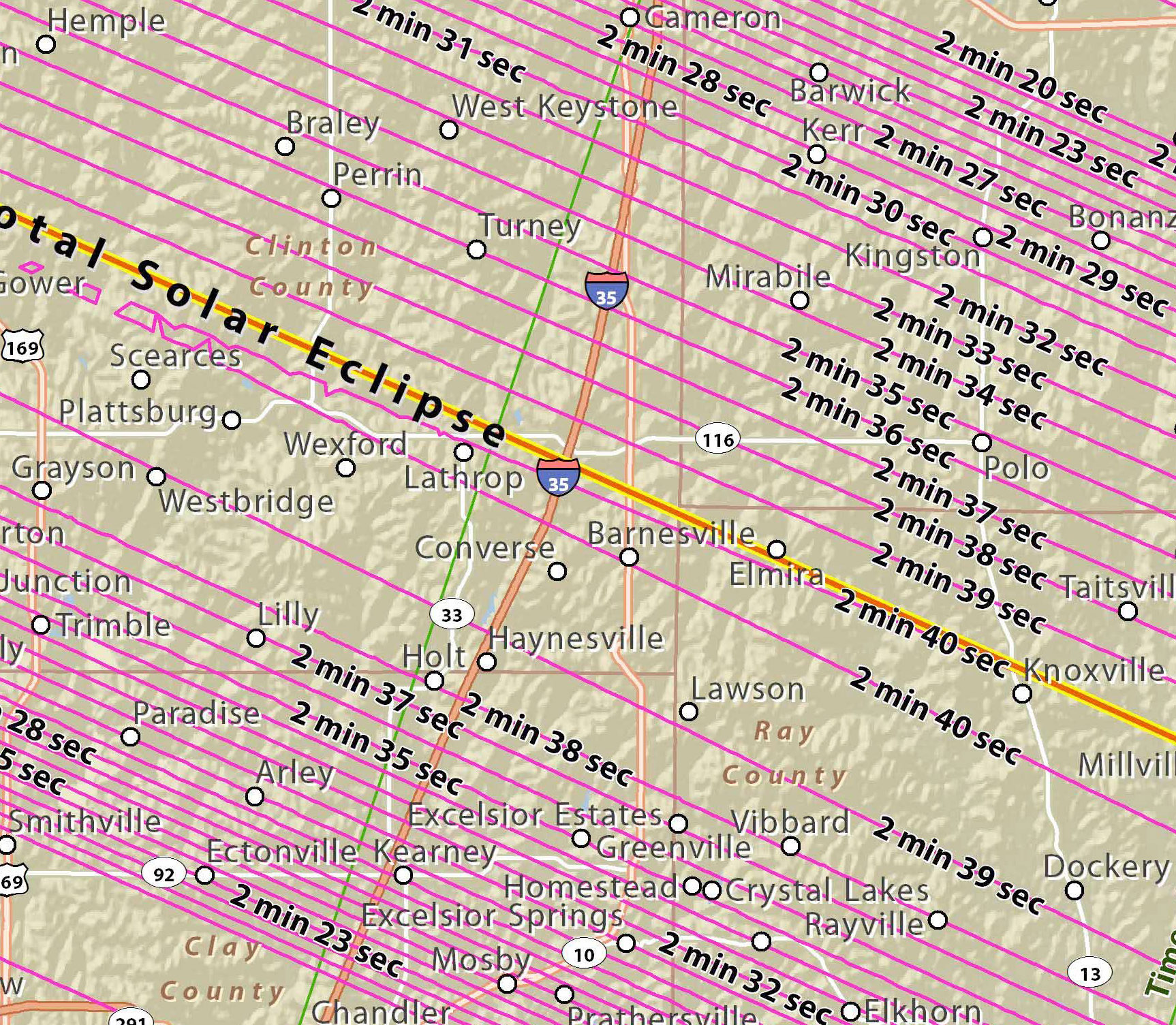
Center of the path of totality as it crosses I-35 near Lathrop, Missouri. Cropped from a full sized, high res map from Eclipse-Map.com. Click for a larger version.
To give you an idea of the detail in the high res maps, this is cropped from the center of the map. This kind of detailed map will help you get near the path of totality. Detailed maps like this are available for the entire path of totality with several maps for each state.
Choose Back Up Locations
Your preferred location might be cloudy on eclipse day. Keep an eye on your favorite weather sources prior to the eclipse and especially the day before the eclipse. Pick backup locations well ahead of time both east and west of your prime location with a travel plan to get there. Make sure you have maps.
Finding a Place to Stay
Most motels along the prime eclipse locations were booked up months ago. Pick your location now and see if you can find a place to stay. You may need to find a place farther from the path and drive to your location Monday morning. Start early. Travel near the eclipse path could be horrendous.
Viewing the Eclipse Safely
This is the most important paragraph on this page. Be careful! You can go blind as a result of looking at the sun during an eclipse. Unlike a normal day when it hurts to look at the sun, during the later stages of an eclipse the visible light from the sun will be dimmed so much that with your unprotected eyes you will be able to look at the sun with no pain. But invisible rays will still be ruining your eyes. Blindness won’t happen immediately. A few minutes to a few hours after looking at the sun your eyes will start to hurt. In about 24 hours you go totally blind. SO DO NOT LOOK AT THE SUN WITH YOUR UNPROTECTED EYES UNTIL THE SUN IS TOTALLY ECLIPSED. It is not even safe to look at the sun with the unprotected eyes during the Diamond Ring effect and Bailey’s Beads just before totality. All of this is especially true when using binoculars and looking through a telephoto lenses on a camera.
You will need special solar eclipse glasses and or boniculars to safely view the eclipse before and after totality. Buy them now. There is a huge rush on orders and dealers are expected to run out of stock before the eclipse. My preferred choices for eclipse binoculars and glasses is at the eclipse page of my Amazon powered photography store. You get the same great Amazon prices, service, and guarantee and you help support this web site. Thanks! My preferred brand is Celestron. They are one of the premiere manufacturers of telescopes, bonoculars, and astronomy accessories. Eclipse glasses range from $9 to $20. Eclipse binoculars range from $29.95 to $69.95.
How to Photograph the Eclipse
If you want to photograph the stages of the eclipse before and after totality, you will need a solar filter for your camera lens. One of the best sources for “White Light” solar filters is Thousand Oaks Optical. They range in price from $49 to $79 depending on the size filter you need to fit to the front of your lens. They also have solar filters for telescopes.
One very important tip for photography. Focus on something at infinity other than the sun. Then turn off autofocus. Put a proper solar filter on the very front of your lens. (Do NOT use drop in filters that slide in the middle or back of the lens.) Do not look through the viewfinder of the camera at the sun. Instead, put your camera in “live view” mode and tweak your focus on the sun using a magnified live view image on the back of your camera. During totality you can take off the filter to photograph the sun’s corona, or do landscape photos in the darkness.
There are articles all over the internet on how to photograph an eclipse of the sun. Start this excellent article by Dennis Mammana at Adorama. You can also read this series of articles by Canon USA. Another article to read is How to Photograph A Solar Eclipse by Fred Espenak.
One of the very best books on photographing the eclipse is How to Photograph the Solar Eclipse by experienced astrophotographer Alan Dyer.
There is a cool flyover video of the eclipse here.
The Great American Eclipse Series
The Great American Eclipse Series  – All of my eclipse articles are listed at this link. Check back for new articles as they appear.
All the Links in this Article
Maps: The “Great American Eclipse” Totality Path from Oregon to South Carolina, August 21, 2017
GreatAmericanEclipse.com   - the best all around eclipse site. Start here.
Ten great viewing locations at GreatAmericanEclipse.com
Eclipse2017.org - the best comprehensive guide to viewing locations
Eclipse-Maps.com - the best free downloadable high-res maps of the eclipse path with several highly detailed maps for each state
Eclipse glasses, goggles and binoculars at my Amazon powered photography store
Thousand Oaks Optical - “White Light” solar filters for camera lenses and telescopes
How to Photograph the Total Solar Eclipse by Dennis Mammana
How to Photograph A Solar Eclipse by Fred Espenak
A Total Guide to Totality: Solar Eclipse Photography - a how to” series of seven articles at Canon USA.
How to Photograph the Solar Eclipse by Alan Dyer, highly recommended
Great American Eclipse Fly Over Video
The Great American Eclipse Series
The Great American Eclipse Series -Â All of my article on the solar eclipse
More Links on the Great American Eclipse
Eclipse 2017Â -Â at NASA
Total Eclipse of the Sun: August 21, 2017 – EarthSky.org
Two dozen tips for the August 21, 2017, total solar eclipse – Astronomy magazine
25 facts you should know about the August 21, 2017, total solar eclipse – Astronomy magazine
Planning for America’s Great American Eclipse in August 2017 - Sky and Telescope magazine
The Great American Total Solar Eclipse Is Coming 2 Years from Today - Space.com
Total Solar Eclipse of 2017 Aug 21Â -Â EclipseWise.com
Total Solar Eclipse – 2017 August 21 - Eclipsophile.com

